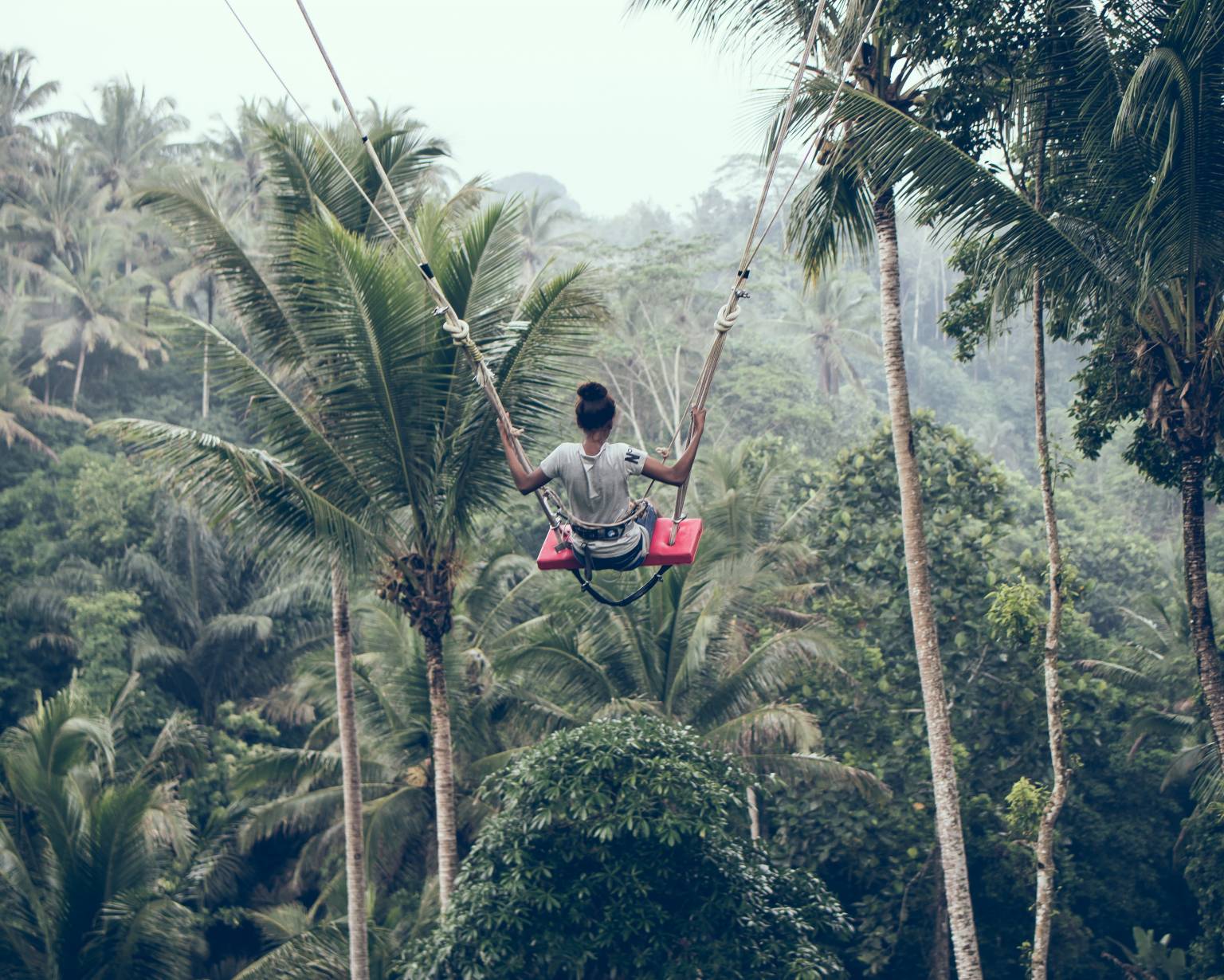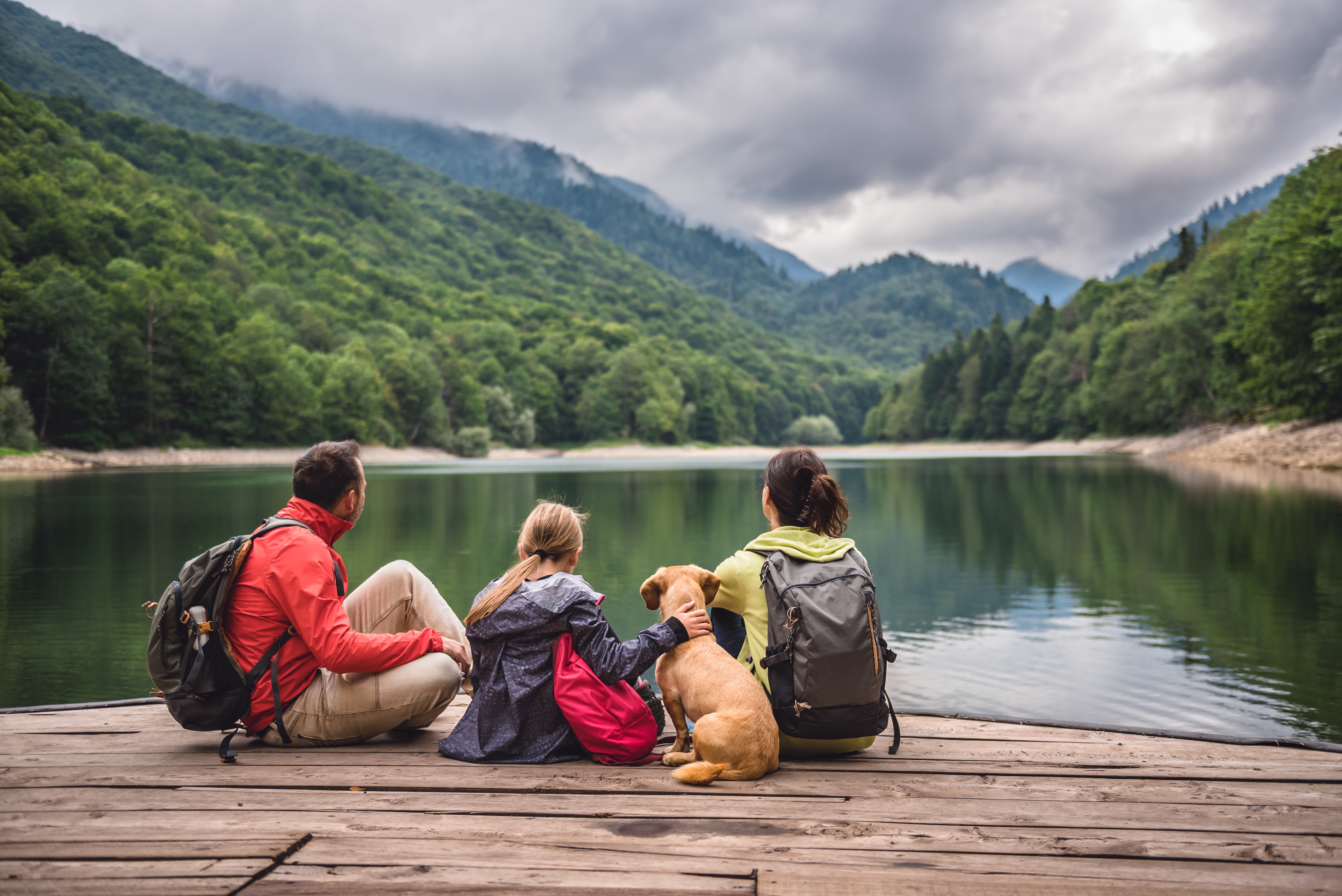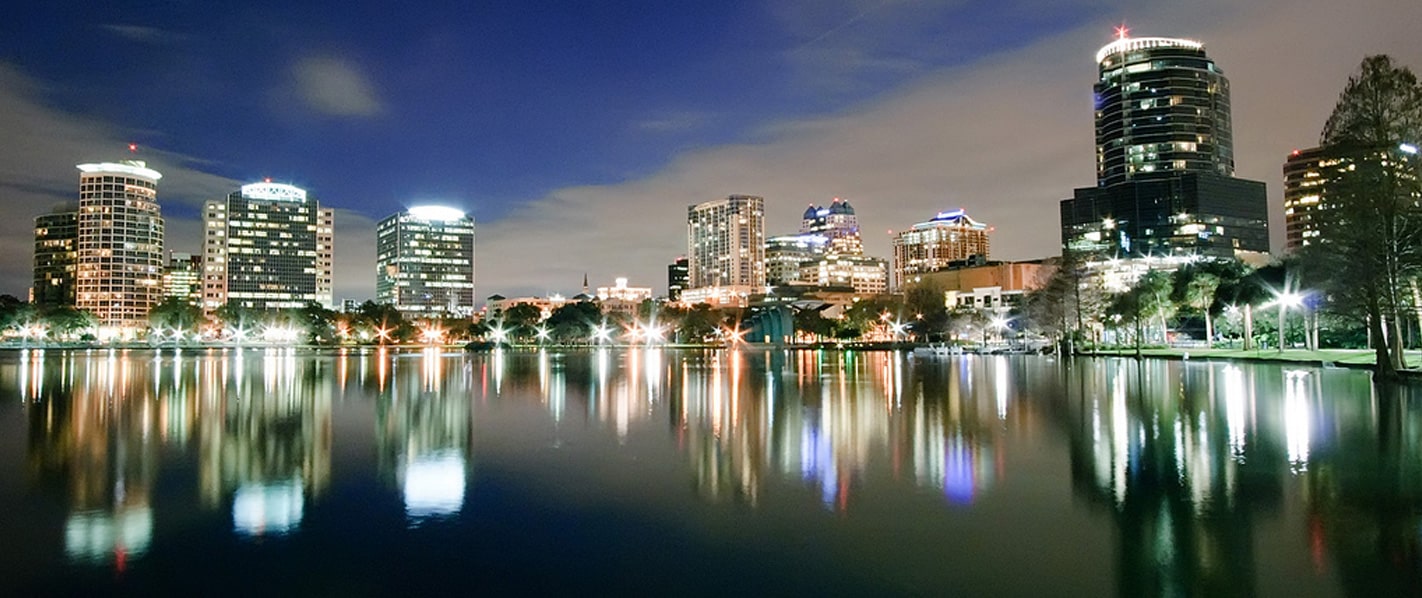Embark on an extraordinary adventure that will ignite your spirit and push your limits. Great adventure trips offer a transformative experience that combines exploration, challenge, and personal growth. Whether you’re a seasoned adventurer or a novice seeking an unforgettable escapade, this comprehensive guide will equip you with everything you need to plan and execute an unforgettable adventure.
From the majestic peaks of mountain ranges to the untamed wilderness of remote islands, the world is a tapestry of thrilling destinations waiting to be discovered. Join us as we delve into the types of adventure trips available, the essential steps to planning a successful journey, and the gear and training you’ll need to embrace the challenges that lie ahead.
Adventure Trip Types

Adventure trips offer a unique opportunity to explore the natural world and challenge yourself physically and mentally. There are many different types of adventure trips available, each with its own unique set of challenges and rewards.
Some of the most popular types of adventure trips include:
- Hiking: Hiking is a great way to explore the wilderness and enjoy the scenery. There are hiking trails for all levels of fitness, from easy day hikes to challenging multi-day treks.
- Backpacking: Backpacking is a more challenging form of hiking that involves carrying all of your gear on your back. Backpacking trips can be customized to fit any budget and fitness level, and they offer a great way to get away from it all and immerse yourself in nature.
- Kayaking: Kayaking is a great way to explore rivers, lakes, and oceans. There are many different types of kayaks available, from sit-on-top kayaks that are easy to learn to maneuver to whitewater kayaks that are designed for more experienced paddlers.
- Rock climbing: Rock climbing is a challenging and rewarding activity that can be enjoyed by people of all ages and fitness levels. There are many different types of rock climbing, from indoor climbing on artificial walls to outdoor climbing on natural rock formations.
When choosing an adventure trip, it is important to consider your interests and fitness level. If you are new to adventure travel, it is a good idea to start with a shorter, easier trip. As you gain experience, you can gradually increase the difficulty of your trips.
No matter what type of adventure trip you choose, you are sure to have an unforgettable experience. Adventure trips offer a unique opportunity to explore the natural world, challenge yourself, and create lasting memories.
Planning an Adventure Trip

Planning an adventure trip is an exciting and rewarding endeavor that requires careful preparation and attention to detail. To ensure a successful and memorable experience, it’s essential to follow a systematic approach and consider various factors.
The key steps involved in planning an adventure trip include:
- Setting a budget:Determine the estimated costs of the trip, including transportation, accommodation, activities, food, and any additional expenses.
- Choosing a destination:Research and select a destination that aligns with your interests, fitness level, and budget. Consider factors such as the type of adventure you seek, the season, and the cultural and environmental aspects of the destination.
- Booking accommodations and activities:Secure reservations for accommodation, tours, and activities in advance, especially during peak season. Research reputable providers and compare prices to find the best deals.
To ensure a safe and enjoyable experience, it’s crucial to:
- Research and select reputable tour operators and guides:Look for companies with a proven track record, positive reviews, and certifications from recognized organizations.
- Pack appropriately:Pack light and efficiently, bringing only essential items and gear suitable for the type of adventure and climate.
- Stay safe while on the road:Be aware of your surroundings, take necessary precautions, and inform someone about your itinerary and expected return date.
Adventure Trip Destinations

The world offers a vast array of adventure trip destinations, each with its unique features and challenges. From towering mountain ranges to remote islands, there is an adventure out there for every traveler.
Before embarking on an adventure trip, it is important to do your research and choose a destination that is right for you. Consider your fitness level, experience, and interests. It is also important to be aware of local customs and traditions to help you prepare for your trip.
National Parks
- Yellowstone National Park(USA): Home to Old Faithful geyser, Grand Prismatic Spring, and abundant wildlife.
- Grand Canyon National Park(USA): A UNESCO World Heritage Site, renowned for its vast canyon carved by the Colorado River.
- Serengeti National Park(Tanzania): Known for its annual wildebeest migration, one of the largest gatherings of animals on Earth.
- Great Barrier Reef Marine Park(Australia): The world’s largest coral reef system, home to a diverse array of marine life.
- Amazon Rainforest(South America): The largest rainforest in the world, with an estimated 10% of the world’s known species.
Mountain Ranges
- Mount Everest(Nepal/China): The highest mountain in the world, a challenging but rewarding climb for experienced mountaineers.
- Mount Kilimanjaro(Tanzania): The highest mountain in Africa, a popular trekking destination for climbers of all levels.
- Alps(Europe): A mountain range spanning several countries, offering stunning scenery and opportunities for hiking, skiing, and mountaineering.
- Andes(South America): The longest continental mountain range in the world, with peaks over 20,000 feet.
- Himalayas(Asia): The highest mountain range in the world, home to some of the most challenging and awe-inspiring peaks.
Remote Islands
- Galapagos Islands(Ecuador): A UNESCO World Heritage Site, known for its unique wildlife, including giant tortoises and marine iguanas.
- Easter Island(Chile): A remote island in the Pacific Ocean, famous for its enigmatic stone statues called moai.
- Svalbard(Norway): An Arctic archipelago known for its polar bears, glaciers, and northern lights.
- Antarctica: The coldest, driest, and highest continent on Earth, offering an unforgettable adventure for those seeking a truly remote experience.
- Raja Ampat Islands(Indonesia): A group of islands in eastern Indonesia, renowned for its stunning coral reefs and marine biodiversity.
Adventure Trip Gear

Choosing the right gear for your adventure trip is essential for staying safe, comfortable, and having a great time. Here’s a comprehensive list of essential gear to consider: Clothing:
- Moisture-wicking, quick-drying fabrics for base layers
- Insulating mid-layers for warmth
- Waterproof, breathable outer layers for protection from the elements
- Comfortable, durable hiking boots or shoes
- Headwear for sun and cold protection
- Gloves for warmth and protection
Backpacks:
- Choose a backpack with a comfortable fit and ample capacity for your gear
- Consider the type of trip and terrain you’ll be encountering
- Look for backpacks with adjustable straps, padded hip belts, and durable materials
Safety Equipment:
- First-aid kit with essential medical supplies
- Whistle or other signaling device
- Map and compass or GPS device
- Headlamp or flashlight
- Emergency shelter or bivy sack
- Fire starter or matches
Other Essentials:
- Water bottle or hydration system
- Snacks and energy bars
- Insect repellent and sunscreen
- Sunglasses
- Toiletries
- Camera (optional)
Packing Tips:
- Pack light and leave unnecessary items behind
- Use packing cubes to organize and compress your gear
- Distribute weight evenly throughout your backpack
- Place frequently used items in easily accessible pockets
Renting or Purchasing Gear:
- Renting gear can be a cost-effective option for occasional trips
- Consider purchasing gear if you plan on frequent adventures
- Research different brands and models to find the best gear for your needs
Adventure Trip Training

Adequate physical and mental preparation is crucial for adventure trips. They often involve strenuous activities and challenging environments that require fitness, endurance, and mental resilience.
A comprehensive training plan should include both physical and mental components. Physical training focuses on building strength, endurance, and flexibility, while mental training prepares you for the psychological demands of the trip.
Physical Training, Great adventure trips
The type of physical training required depends on the specific adventure trip you are planning. For example, hiking trips require extensive cardiovascular training, while rock climbing demands upper body strength and endurance.
A sample training plan for a hiking trip might include:
- Walking or running:Start with short distances and gradually increase duration and intensity.
- Hill training:Incorporate hills into your walking or running routes to build leg strength.
- Strength training:Include exercises like squats, lunges, and core exercises to improve overall strength.
- Flexibility training:Perform stretching exercises to prevent injuries and improve mobility.
Mental Training
Mental training helps you prepare for the psychological challenges of adventure trips. It involves developing coping mechanisms for stress, fear, and uncertainty.
Tips for mental training include:
- Visualization:Imagine yourself successfully completing the trip and overcoming challenges.
- Positive self-talk:Encourage yourself with positive affirmations and remind yourself of your strengths.
- Stress management techniques:Practice relaxation techniques like deep breathing or meditation to manage stress.
- Goal setting:Break down the trip into smaller, achievable goals to maintain motivation.
Staying motivated and avoiding injuries during training requires discipline and consistency. Set realistic goals, find an activity partner, and listen to your body to prevent overexertion.
Adventure Trip Safety: Great Adventure Trips
Embarking on an adventure trip is an exhilarating experience, but it’s crucial to prioritize safety to ensure a memorable and enjoyable journey. Potential risks are inherent in adventure activities, and it’s essential to mitigate them effectively.
This section delves into the potential risks associated with adventure trips and provides comprehensive tips for staying safe in remote areas, including navigating difficult terrain, dealing with wildlife, and responding to emergencies. Additionally, we’ll explore the significance of travel insurance and guide you in selecting the right policy for your specific trip.
Potential Risks and Mitigation Strategies
- Physical Hazards:Adventure activities often involve challenging terrain, steep slopes, and exposure to elements. Wear appropriate gear, assess routes thoroughly, and stay within your physical limits.
- Wildlife Encounters:Respect wildlife by maintaining a safe distance and following local guidelines. Store food securely, be aware of animal behavior, and carry bear spray if necessary.
- Weather Conditions:Monitor weather forecasts and be prepared for sudden changes. Carry rain gear, extra clothing, and stay informed about potential hazards.
- Medical Emergencies:Pack a first-aid kit, learn basic first aid skills, and consider carrying a personal locator beacon for remote areas.
- Equipment Failure:Regularly inspect gear before and during your trip. Carry essential spares and know how to use them.
Staying Safe in Remote Areas
Venturing into remote areas requires additional precautions:
- Navigation:Use maps, GPS devices, and compasses. Stay on designated trails, inform others of your itinerary, and consider carrying a satellite communicator.
- Water Safety:Treat water before drinking, carry ample supplies, and avoid swimming in unfamiliar areas.
- Emergency Response:Learn basic survival skills, carry a whistle or signal mirror, and be prepared to spend an unexpected night outdoors.
Travel Insurance
Travel insurance provides peace of mind and financial protection in case of unexpected events. Consider the following when selecting a policy:
- Coverage Type:Ensure your policy covers adventure activities, medical expenses, and trip cancellation.
- Limits and Deductibles:Choose limits that meet your needs and consider a lower deductible for greater coverage.
- Company Reputation:Research the insurer’s reputation for claims handling and customer service.
Adventure Trip Benefits

Embarking on adventure trips offers a plethora of benefits that extend beyond the thrill and excitement of the experience. These journeys can have profound physical, mental, and emotional impacts, leaving lasting positive effects on participants.
Adventure trips challenge individuals to step outside of their comfort zones and push their limits. This can lead to improved physical fitness, increased endurance, and enhanced coordination. The physical exertion involved in activities such as hiking, kayaking, or rock climbing can strengthen muscles, improve cardiovascular health, and boost energy levels.
Mental and Emotional Benefits
Adventure trips also provide significant mental and emotional benefits. The challenges and obstacles encountered on these journeys can help individuals develop resilience, adaptability, and problem-solving skills. By facing fears and overcoming obstacles, participants can gain a greater sense of self-confidence and self-esteem.
Furthermore, adventure trips offer opportunities for solitude and introspection, allowing individuals to connect with their inner selves and gain a deeper understanding of their values and priorities. The breathtaking scenery and awe-inspiring experiences encountered during these journeys can inspire feelings of wonder, gratitude, and a renewed appreciation for the beauty of the natural world.
Final Wrap-Up

As you embark on your great adventure trip, remember that the true value lies not only in reaching your destination but in the transformative journey itself. Embrace the challenges, savor the moments of awe and wonder, and return home with a newfound appreciation for the world and your own capabilities.
Adventure awaits, and it’s time to seize it with open arms.
Quick FAQs
What are the different types of adventure trips available?
Adventure trips encompass a wide range of activities, including hiking, backpacking, kayaking, rock climbing, and wildlife safaris. Each type offers unique challenges and rewards, catering to different interests and fitness levels.
How do I choose the right adventure trip for me?
Consider your interests, fitness level, and travel preferences. Research different destinations and activities to find a trip that aligns with your goals. Consult with tour operators and guides to gather insights and recommendations.
What are the essential steps to planning an adventure trip?
Planning an adventure trip involves setting a budget, choosing a destination, booking accommodations and activities, researching reputable tour operators and guides, packing appropriately, and ensuring your safety.
What gear do I need for an adventure trip?
Essential gear includes clothing and footwear suitable for the climate and activities, a backpack, safety equipment, and personal hygiene items. Consider renting or purchasing gear if necessary.
How do I stay safe during an adventure trip?
Stay informed about local customs and potential hazards. Pack a first-aid kit and emergency supplies. Be aware of your surroundings, follow safety guidelines, and trust your instincts.
